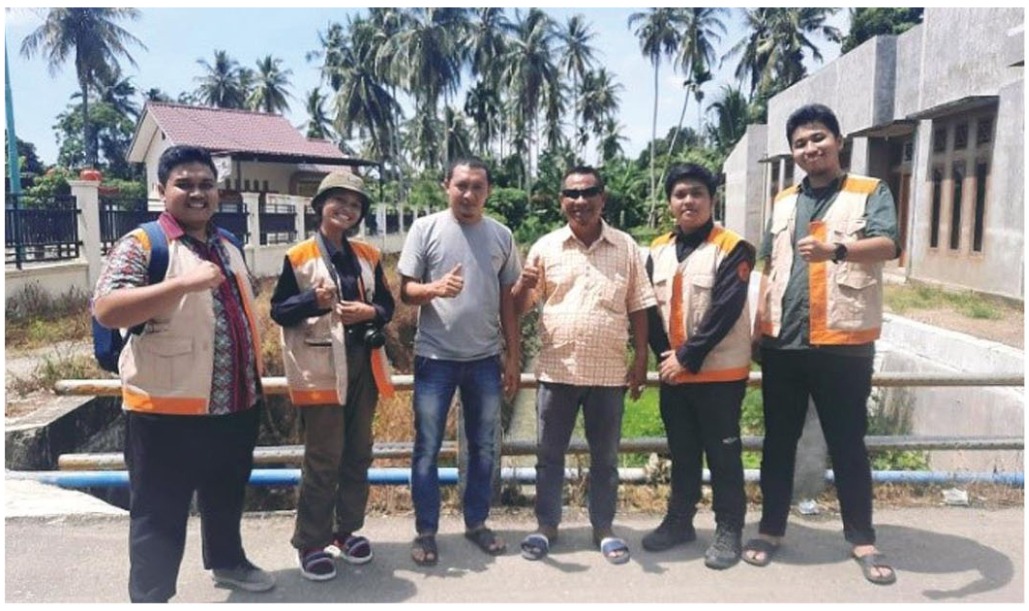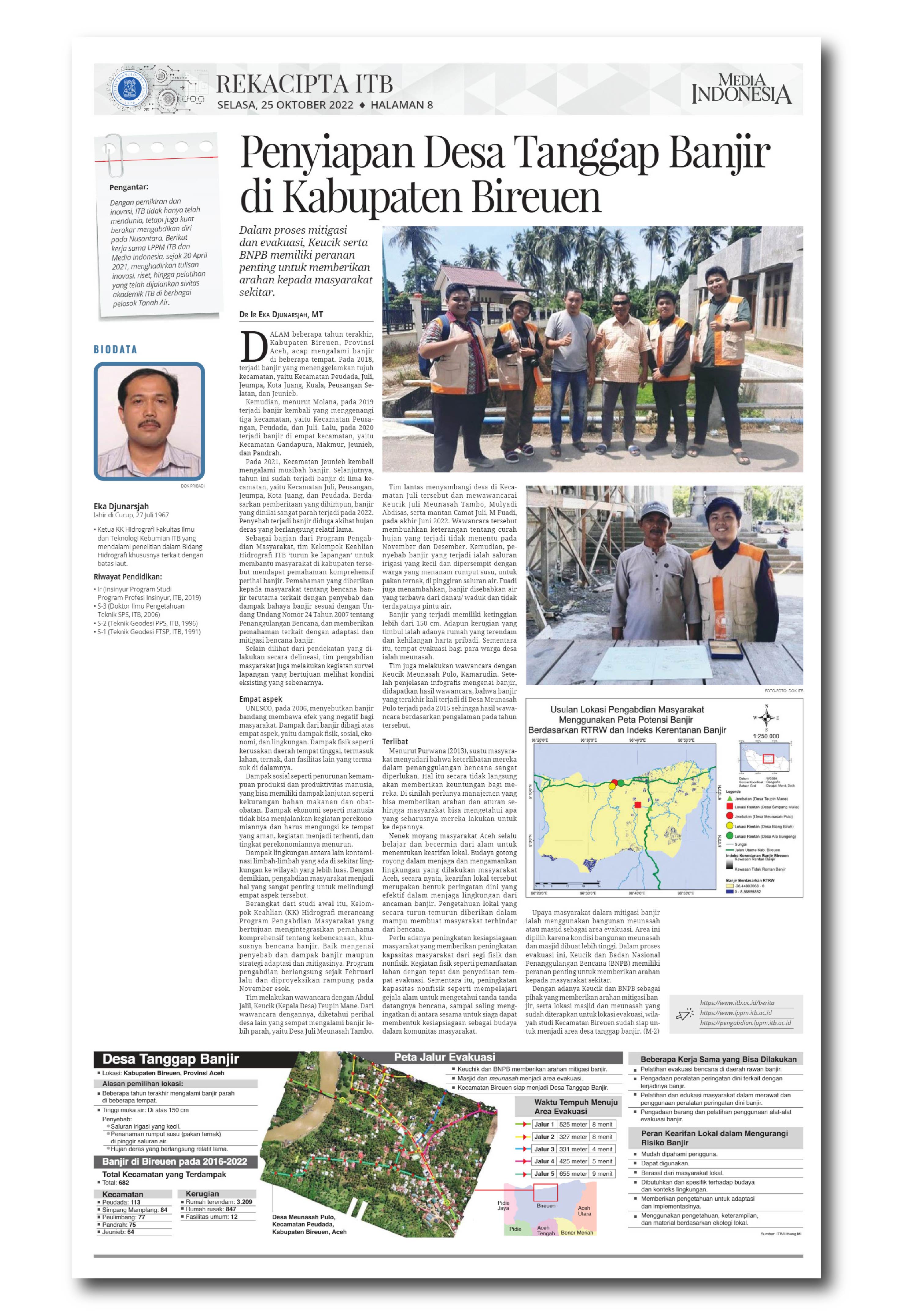ITB Hydrographic Research Group Team Helped the Implementation of Flood-ready Village in Bireuen District
By Adi Permana
Editor Adi Permana

BANDUNG, itb.ac.id – In the past few years, some parts of the Bireuen District, Province of Nanggroe Aceh Darussalam, have experienced frequent flooding. According to the latest news, the 2022 flood which is considered the worst flooding happened because of a long duration of heavy rain.
As a part of the Community Services Program (CSP), a team from Hydrography Research Group ITB decided to help the community in the Bireuen District, especially to find out the real reason behind the flooding and the danger that it possesses. In addition to that, the team also provided relevant information on the adaptation and mitigation of flood disasters based on the current field condition.
In a study that was published in 2006, UNESCO stated that flash floods bring four negative impacts to the community, including physical, social, economic, and environmental impact. This community service is hoped to protect the community from those impacts through the integration of a comprehensive understanding of disasters. The team began the preparation of their project in February 2022 and they projected it to be completed by November 2022.
As a starter, the team interviewed the village elder of Teupin Mane, Abdul Jalil. "From there, we know that there is another village that experienced worse flooding, the Juli Meunasah Tambo Village," said Dr. Ir. Eka Djunarsjah, M.T., who led the CSP team. The flooding in the Juli Village had a height of more than 1,5 meters thus submerging the residents' houses and causing material loss.

*Source: Media Indonesia's Infographic
After visiting and talking to the former elder of that village, the team obtained information on erratic rainfall that happened in November and December. Then, they also hypothesized that the flooding was caused by the inadequacy of existing irrigation canals which was also worsened by the planting of milk grass as animal feed by the residents. In addition to that, the flooding was also worsened by water runoff from nearby lakes and reservoirs and the absence of flood gates.
ITB Hydrograph Research Group Team realized the importance of management and regulation so that the community can understand the right disaster mitigation measures. Looking at nature itself, the ancestors of the Acehnese people have their own local wisdom in dealing with disasters. Such as their deep-rooted cooperative culture in protecting the environment as an effective early warning to prevent flooding.
Despite having inherited knowledge, capacity improvement of the community, from both the physical and non-physical side is still urgently needed. "Physical activity such as landscape modification and providing evacuation shelters, and non-physical activity such as studying natural signs and reminding each other to be aware," explained Dr. Eka. These can form a readiness culture in community communication.
As a flood mitigation effort, Bireuen District residents use mosques as evacuation shelters. The building was chosen because of its relatively high foundation. In this process, Keuchik and the National Board for Disaster Management (BNPB) have an important role in providing guidance. With the presence of stakeholders and evacuation areas, they hope that Bireuen District will be ready for future flooding.

*This article has been published in Media Indonesia rubric Rekacipta ITB, the complete article can be read at https://pengabdian.lppm.itb.ac.id
Reporter: Sekar Dianwidi Bisowarno (Bioengineering, 2019)
Translator: Favian Aldilla R (Civil Engineering, 2019)

.jpg)
.jpg)
.jpg)
.jpg)
.jpg)


.jpg)